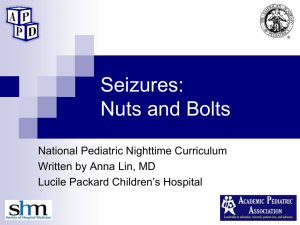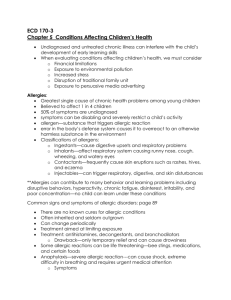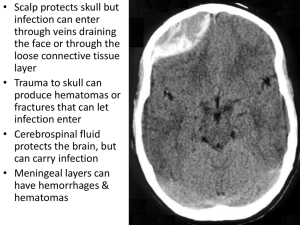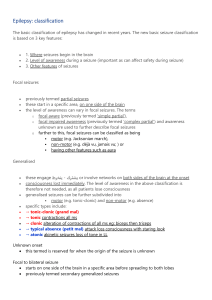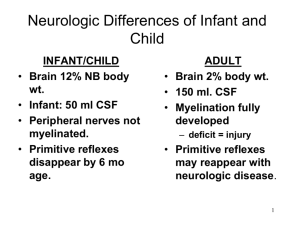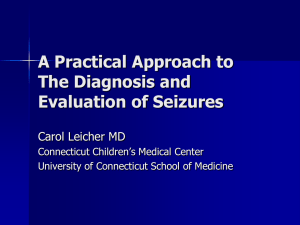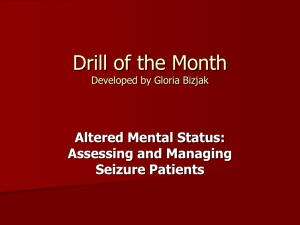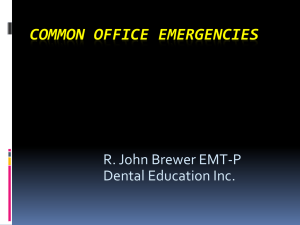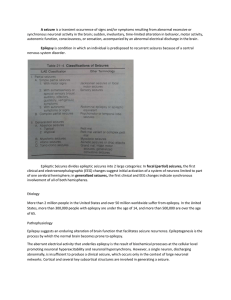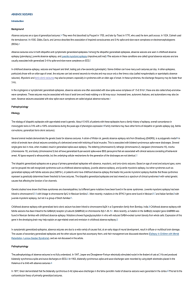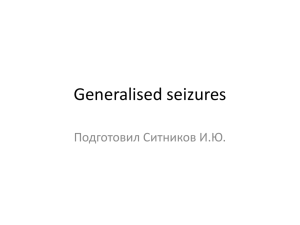Types of SeizuresCh8
advertisement
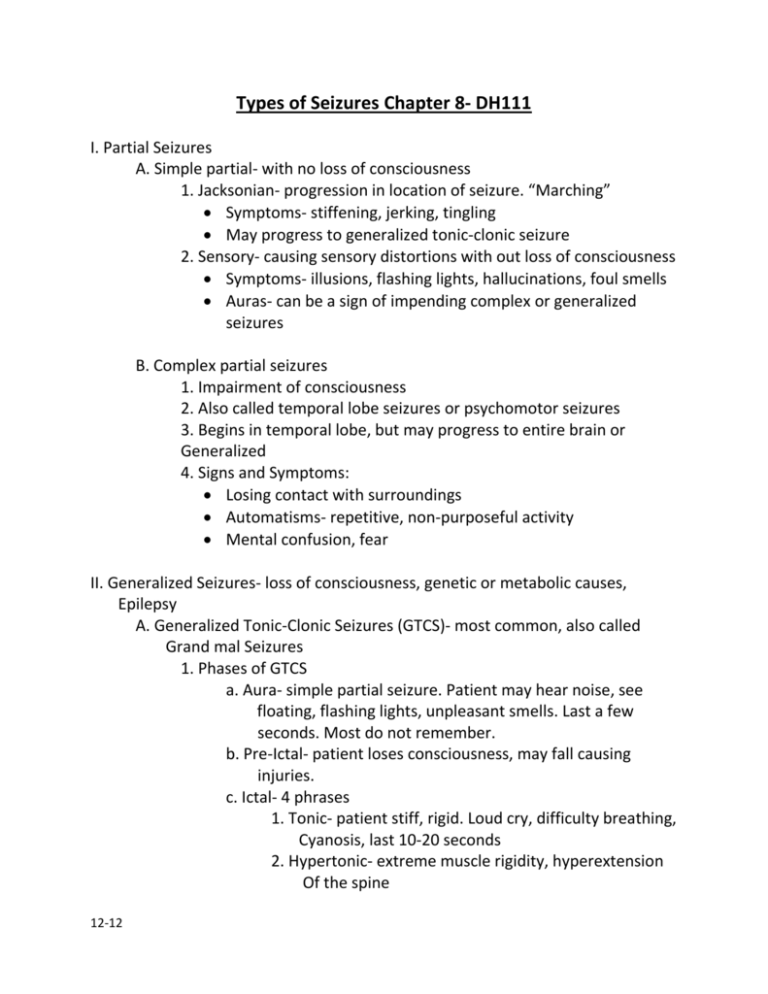
Types of Seizures Chapter 8- DH111 I. Partial Seizures A. Simple partial- with no loss of consciousness 1. Jacksonian- progression in location of seizure. “Marching” Symptoms- stiffening, jerking, tingling May progress to generalized tonic-clonic seizure 2. Sensory- causing sensory distortions with out loss of consciousness Symptoms- illusions, flashing lights, hallucinations, foul smells Auras- can be a sign of impending complex or generalized seizures B. Complex partial seizures 1. Impairment of consciousness 2. Also called temporal lobe seizures or psychomotor seizures 3. Begins in temporal lobe, but may progress to entire brain or Generalized 4. Signs and Symptoms: Losing contact with surroundings Automatisms- repetitive, non-purposeful activity Mental confusion, fear II. Generalized Seizures- loss of consciousness, genetic or metabolic causes, Epilepsy A. Generalized Tonic-Clonic Seizures (GTCS)- most common, also called Grand mal Seizures 1. Phases of GTCS a. Aura- simple partial seizure. Patient may hear noise, see floating, flashing lights, unpleasant smells. Last a few seconds. Most do not remember. b. Pre-Ictal- patient loses consciousness, may fall causing injuries. c. Ictal- 4 phrases 1. Tonic- patient stiff, rigid. Loud cry, difficulty breathing, Cyanosis, last 10-20 seconds 2. Hypertonic- extreme muscle rigidity, hyperextension Of the spine 12-12 3. Clonic-rhythmic, jerky movements, heavy breathing, Clenched jaw, froth at mouth, last 2-5 minutes 4. Post-Ictal- movement stopped, remains unconscious, CNS, CVS, respiratory system depression, can lead To airway obstruction, muscle relaxation, patient Wakes confused, last minutes to hours B. Generalized Absence Seizures- or petit mal seizures Most common in children Genetic Blank stare Minor facial movements Last 5-30 seconds May occur 100 times a day Can progress to GTCS Rare after age 20 Not always responsive to medications C. Atonic or Akinetic Seizures Drop attack Loss of postural tone Temporary loss of consciousness Primarily in children D. Myoclonic Seizures Bilateral massive epileptic myoclonus Brief, bilateral, involuntary muscular jerks-rhythmic Usually confined to face, trunk, or one extremity Occurs in children <5 years old Brief loss of consciousness E. Febrile Seizures Not usually true seizures Causes parental concern 2% cases develop into true seizure disorders Associated with fever without intracranial infection 12-12 Treatment of seizures in Dental Office 1. Stop treatment 2. Remove instruments from patient’s mouth 3. Move equipment out of the way 4. Loosen patient’s tight clothing 5. Place in supine position 6. Place one person at foot and one at head of dental chair 7. Call EMS 8. Administer oxygen 4-6 L/min 9. CPR 10. Monitor vitals 11. Gently restrain patient to help avoid injury 12. Do NOT put anything in patient’s mouth 12-12




